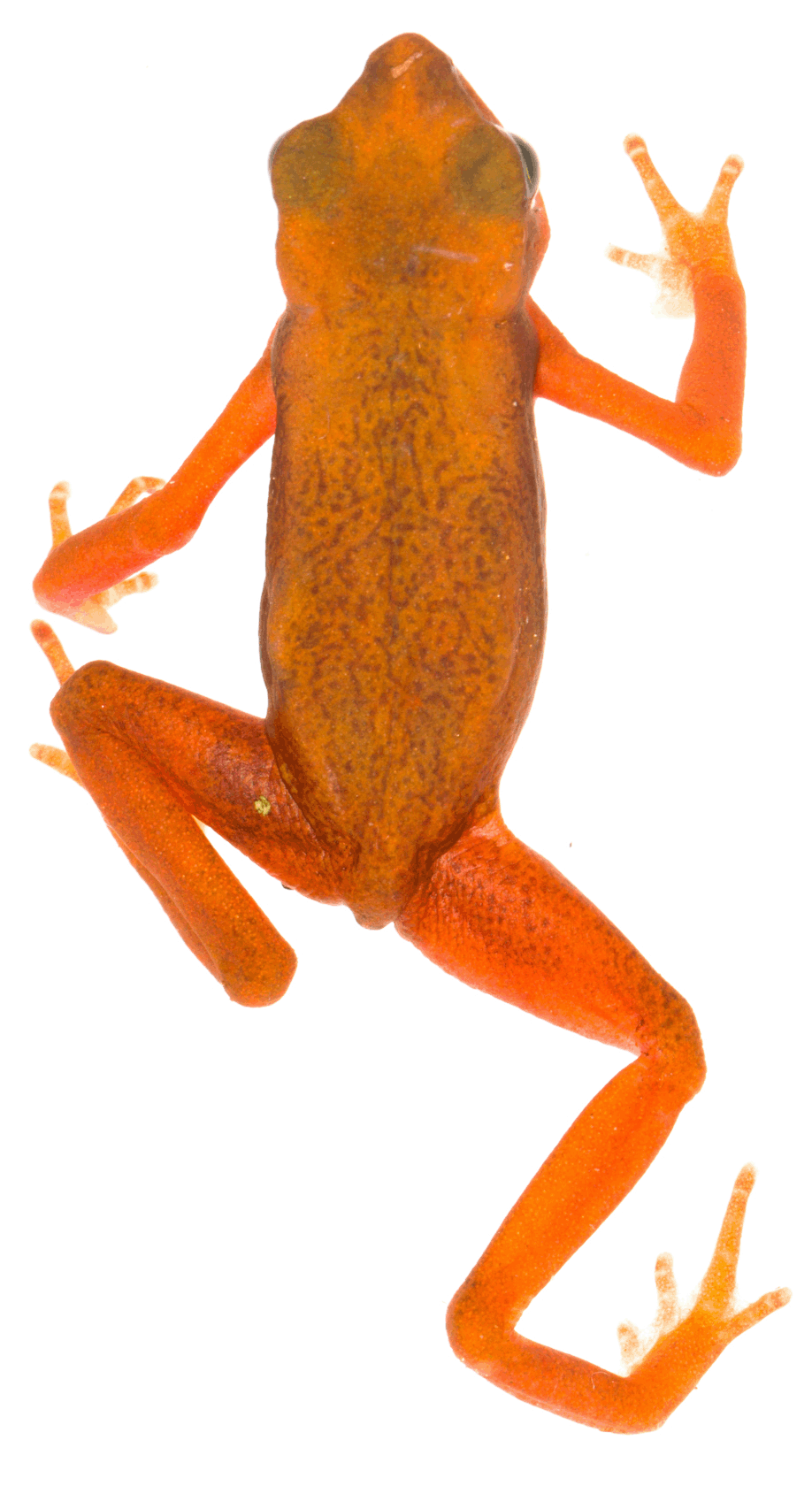

The underlying drive of my research surrounds understanding the evolution and consequences of conspicuous signals in animals. In doing so, I seek to pursue a number of questions surrounding conspicuous signaling.
How do novel signals evolve and spread in populations?
Aposematic signaling is thought to be under strong positive frequency dependent selection. Consequently, local predators should limit variability of aposematic signal within a population. Despite this, numerous species show considerable within and among population variation in aposematic signal. How do novel signals overcome expectations of positive frequency dependent selection? For my PhD, and in collaboration with Brice Noonan, we use the Dyeing Poison Frog (Dendrobates tinctorius) to explore how predators view, learn, and generalize known and novel signals both in the field and in the lab.
Are mechanisms promoting diversification of conspicuous signals repeated across species?
Honest signaling, whereby a conspicuous signal is predictive of the consequence to predation (i.e., toxicity), could be driving signal diversity in species that derive secondary defenses from dietary sources that vary across its geographic range. Honest signaling has been implicated in the Strawberry Poison Frog (Oophaga pumilio) in Bocas del Toro, Panama. Working with the Smithsonian Tropical Research Institute, I am exploring if honest signaling also occurs in other species of poison frog in the area.
Does mode of toxin sequestration influence signal diversity?
Some of the best examples of aposematism (i.e., Neotropical poison frogs, Heliconius), and indeed, many that have influenced our understanding of the phenomenon derive toxins from dietary sources. Being inherently variable, this allows for honest signaling to operate. But what if toxins were not variable? What if the consequence was the same regardless of phenotype? Would predators broadly generalize signal? Working with Kate Umbers, we are investigating how the Australian Brood Frogs (Pseudophryne) colors are predictive, or not, of the alkaloid toxins they produce independent of diet.
How does predator learning influence signal diversity?
The efficacy of aposematic signaling depends on predator ability to learn that conspicuous signals are associated with a secondary defense. Does signal diversity break down predator ability to recognize and associate aposematic signals with secondary defenses. Working with Renan Bosque, we explore the limits of predator learning and the consequences of such on the persistence of signal diversity in aposematic species.
Do population demographics change among phenotypically distinct populations?
Variable conspicuous signals can affect prey species’ ability to communicate aposematic signals or signals to conspecifics. This, in turn, can affect population demographics in accordance to the efficacy of transmitting signals to intended receivers. In collaboration with Gerald Urquhart, we investigated how populations of Oophaga pumilio differ across populations (i.e., density, sex ratios, response to limiting resources) in the Bocas del Toro archipelago of Panama.
